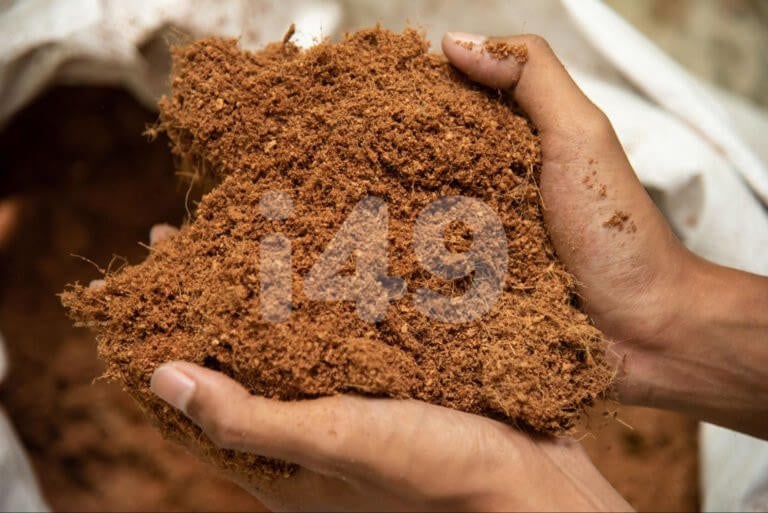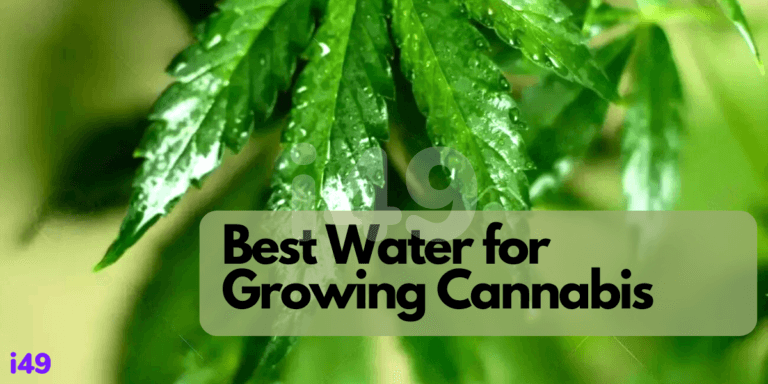Most gardeners know about feeding their plants nutrients, whether organic or synthetic. Some cultivators prefer organic nutes, while others prefer synthetic ones. Whichever you choose, adding molasses during the flowering phase gives a boost in many ways. Stay with us and learn how to grow cannabis in molasses.
Providing molasses to cannabis is quickly becoming a trend. It’s one of the best organic nutrients, and many growers swear that their buds taste better and are more potent than before. So, let’s explore what molasses is and how it benefits your plants.
What is molasses?
What does this curious word mean? Molasses is a dark, thick syrup with a high carbohydrate content. Bakers and cooks often use it as an alternative sweetener. Besides, it is widely used among those who like prepare edibles like marijuana brownies. With this ingredient, the brownies get special taste.
When making sugar, producers boil down beets or sugarcane and remove the sugar crystals from the syrup. The remaining “juice” is the perfect molasses for marijuana. In appearance, this substance resembles live resin, but more like liquid compared to it.
Many people aren’t aware that plants need sugar for healthy development. Not only does the sweetener help with plant metabolisms, but it also provides essential energy to weed. To assist your marijuana plants in increasing their available energy, you can give your cannabis molasses.
Mineral Information
The main minerals and nutrients you find in molasses are essential for any weed plant to develop properly. If you have a growing medium like coco coir or hydroponics, there’s nothing for your plants to eat. When you give molasses, you ensure they get some of the most vital nutrients they need, such as:
- Calcium: Similar to animals and humans, plants need calcium to grow correctly. It helps them improve the cell walls, keeping their limbs strong.
- Carbohydrates: Carbs are the foundation of energy for most living organisms. Unlike complex sugars, carbohydrates break down quickly and are better than sucrose or similar sugars. When you give your weed molasses, they have more energy reserves available to grow better.
- Copper: Another critical element in plant development is copper. It assists with energy production and respiration. Copper also plays a significant part in how plants process carbs and other minerals.
- Iron: Most weed growers are familiar with iron deficiency. A lack of this mineral stops plants from synthesizing DNA, makes them prone to respiration issues, and renders them unable to photosynthesize. Fortunately, a good cannabis feeding schedule incorporating molasses provides a massive boost in iron and prevents a deficiency.
What does molasses do for plants?
Unlike maple syrup or other thick sugars, molasses has a lot more minerals and microbes. As a plant-derived product, it retains more beneficial nutrients than pure sugar does, and plants digest it easier. Growers report that using molasses on cannabis has visible benefits within days of the first use.
Reduces risk of nutrient lockout
Feeding weed the proper nutrients for growth plays a major role in cultivation. Even the best nutrient packs, organic or not, can cause pH imbalances after extended use in the same soil. If your earth is too salty or lacks certain minerals, your plants can suffer from various nutrient deficiencies.
Chemical nutes cause salt to gather in the soil, which negatively affects your pH balance. Giving marijuana molasses instead of chemical nutrients can prevent this build-up and pH issue. Additionally, it contains many inherent nutes like calcium, copper, iron, magnesium, and even selenium.
Feeds soil microbes
By giving molasses you will enriches the ground. It creates an excellent environment for microbes to live in, which promotes a healthy root system. Consequently, your plants grow bigger, stronger, and offer better yields.
Rhizobacteria are beneficial bacteria that live in the ground. Giving weed molasses allows these colonies to thrive and create chemicals that plants need for healthy growth. A Colorado State University study showed that certain additives in molasses caused larger yields and better overall quality in buds.
Functions as an organic insecticide
Spraying molasses on cannabis is an incredible pesticide. Unknown to most, many insects are incapable of processing sugar. While they may seem to enjoy and even pursue sugary stuff, it kills them when consumed.
When you use molasses on marijuana as a pesticide, it has multiple purposes. Firstly, it kills pests like aphids, lace bugs, thrips, and whiteflies. Secondly, it provides valuable minerals and hydration directly to the leaves. Take note never to spray them with the lights on, as molasses can cause cannabis nutrient burn on the foliage.
What kind of molasses works for cannabis?
There are many types of molasses for weed ranging from light brown to dark brown or near black. Depending on which variety you use, the benefits and sugar content will differ. Let’s look at the best molasses for cannabis:
Light molasses
- Also called: first, mild, Barbados
- How it’s made: from boiling beet juice or cane
- How it tastes (looks): light color, sweet taste and mild flavor
Light molasses is the sweetest variation and most often used in cooking or sauces. It’s less rich than the others and not as thick or dark as blackstrap molasses. Gardeners don’t use light molasses for cannabis because it has more complex sugars than darker ones and fewer minerals.
Dark molasses
- Also called: second, robust
- How it’s made: made from the second boiling of the same ingridients
- How it tastes (looks): less sweet, more dark color, stronger flavor
Dark molasses has a deep color and is more robust than light molasses. It contains more carbohydrates than light molasses but is less sweet. Dark molasses also has a subtle gingerbread flavor which makes it popular in baking cookies or bread. As a supplement, using dark molasses on marijuana has more benefits for plants than the lighter versions.
Blackstrap molasses
- Also called: no other names
- How it’s made: made from the third boiling of the molasses.
- How it tastes (looks): dark color, bitter flavor, the least sweet
Blackstrap molasses is the darkest, thickest variation you can find. Chefs mostly use it in savory dishes because of its bitterness. Using blackstrap molasses on cannabis is also very popular, as it contains the most nutrients.
Treacle
Treacle is slightly different from molasses in a few ways. It contains less sucrose and has a lighter color. The lack of sucrose in treacle doesn’t make it less sweet than molasses but can be slightly bitter. Treacle isn’t an excellent option, and you should stick to using dark or blackstrap molasses on cannabis.
Sulfured vs. unsulfured molasses
There are different viewpoints on whether you should use sulfured or unsulfured molasses on cannabis. Many producers add sulfur dioxide to the product as a preservative to make it last longer. However, sulfur can add a slightly chemical taste of molasses which is why chefs prefer unsulfered versions.
Sulfur kills bacteria, including those living in the ground. That’s all the reason you need to stick to unsulfured molasses for plants. If the soil has no microorganisms, it “dies” and becomes essentially useless.
When should I add molasses to my plants?
So, when should I add molasses to my plants? There’s no specific rule involved, but generally, most growers prefer doing it during the flowering phase. However, it’s possible to give your cannabis molasses throughout their life for an added boost.
You can give molasses during the veg phase to provide it with additional energy and minerals for development. Be careful that you don’t over-feed marijuana, though, as it won’t necessarily use all the food. If you give your weed molasses while it’s young, you should mix about one tablespoon per gallon of water.
Adding molasses during the flowering stage is the most common choice since the results are more visible. Weed needs more energy when it starts budding, which the carbohydrates in the extract provide. Some growers also claim that giving molasses for cannabis in the flowering phase also makes the buds sweeter and more fragrant.
Cultivators that use soil microbes should feed their marijuana molasses throughout its life to keep the microbes alive and well. Without microbes, molasses doesn’t offer much benefit until the flowering phase.
How to use molasses for cannabis
You can use molasses on cannabis in various ways. The most common way to integrate it is to add it to the compost tea (if you don’t know what to add and not to add to your compost heap, read this guide then). Another popular method is to use a molasses foliar spray.
Molasses and compost tea
Feeding molasses or compost tea provides it with various nutritional benefits. It contains microbial life, which enriches the soil, and provides the nutrients to feed them. Fortunately, microbes don’t need much in the way of food.
To create a balanced molasses combination, add one teaspoon to your compost tea. Ideally, the best molasses for cannabis is blackstrap, but dark can work if there’s no alternative. Integrate the mixture into your soil, making sure to mix it throughout the ground.
Molasses foliar spray
When you foliar feed cannabis, you skip the need to incorporate nutrients into your soil and instead send them straight to the leaves for direct absorption. For plants with deficiencies, it provides much-needed nutrients and immediately addresses any symptoms that arise. It also helps as a pesticide, killing any cannabis insects that consume the liquid.
You can make a molasses foliar spray by following a few easy steps:
- Add one teaspoon of molasses to one gallon of lukewarm water.
- Mix the solution and separate into a spray bottle
- Spray liberally over and under the leaves
- Repeat every two weeks
Don’t forget that when you use molasses foliar spray, you should do it at night or with the grow lights off. If the solution evaporates before the leaves can absorb the minerals, your plants can suffer from nutrient burn.
Grow organic with molasses
There are numerous different ways molasses and cannabis go together. With a bit of research and some patience, you can become a growing guru on all things cannabis-related.
As an organic compound, it’s good for your plants and the environment. Using molasses on marijuana is the perfect solution to synthetic alternatives. So grab some molasses, and grow yourself some grasses.
Let the grass grow greener
As you can see, using molasses for cannabis offers many advantages to both plants and humans. Now that you know the benefits of molasses for plants, you can start growing your crops confidently.
You can even find various cannabis recipes that you can try to cook with molasses and application methods on websites and the i49 blog and community. When you join a forum, you become part of a group that shares their knowledge and experience of weed, so you can learn to do it right. Browse our large selection of premium cannabis seeds, you’ll find some cross-breeded options there as well.













